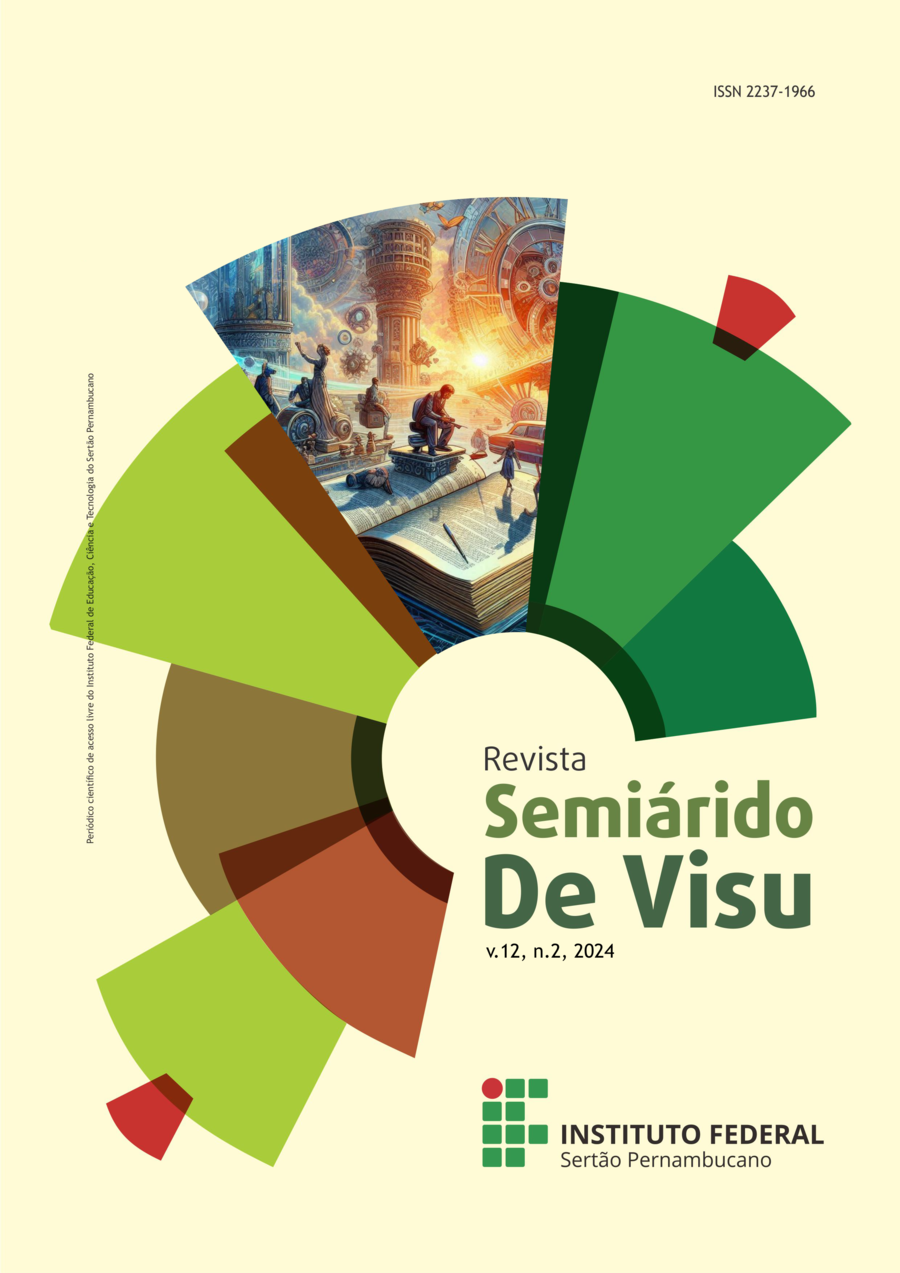Mudança diacrônica e sincrônica dos vocábulos interação e interatividade no texto dicionarístico.
DOI:
https://doi.org/10.31416/rsdv.v12i2.911Keywords:
Lexicography, Dictionary, Meaning, Entry.Abstract
Being a phenomenon subject to social transformations and human relations established in/by society, language experiences a continuous action of modification, which does not find total correspondence, nor timeliness in the act of registration in dictionaries. In this scope, this article seeks to verify the diachronic and synchronic change of the words interaction and interactivity in the dictionary text. The foundation for this research is located in studies of historical and lexical semantics that address the diachronic/synchronic perspective within the scope of lexicography. Methodologically, the dictionaryization process of the mentioned terms was the starting point of the investigation, to then identify whether both units of the language have the same meaning. Six dictionaries were used, covering a period from 1975 to 1999, in contrast to two others from 2011. The results indicate that these words, although similar in spelling, have different employment origins and cataloging dates. In conclusion, it is possible to state that both are relatively recent and that the introduction of the word interaction occurred before the term interactivity in the dictionary. Furthermore, it can be assured that there is a consensus on the etymology of the word interaction, but there is no consensus on the word interactivity. Carrying out this work is justified by its purpose of contributing to linguistic studies inherent to the area of ??historical-lexical semantics, becoming a source for further reflections on the processes of change and variation in the language.
References
ALVES, L. M.; Neologismo: criação lexical. São Paulo: Ática,2004.
AULETE, C.; Novíssimo Dicionário Contemporâneo da Língua Portuguesa. Org. Paulo Geiger. Rio de Janeiro: Lexikon, 2011.
BRASIL. Ministério da Educação e cultura (MEC). Dicionário escolar da língua Portuguesa.Org. Francisco da Silveira Bueno. 5ª ed. São Paulo: Fundação Nacional de Material Escolar (FENAME),1965.
FERREIRA, A.B.H.; Novo dicionário da língua portuguesa. Rio de Janeiro. Nova Fronteira, 1975.
FERREIRA, Aurélio Buarque de Holanda. Novo Dicionário Aurélio da Língua portuguesa. 2 ed. Totalmente rev. e ampl. Rio de Janeiro: Nova Fronteira, 1986.
FERREIRA, A.B.H.; Dicionário Eletrônico Aurélio Século XXI. Rio de Janeiro: Editora Nova Fronteira e Lexikon Informática, 1999. Versão 3.0. 1 CD-ROM.
GARCIA, A.; Semântica Histórica. Soletras, Ano I, n. 02. São Gonçalo: UERJ, jul/dez. 2001.
GIL, A. C.; Como elaborar projetos de pesquisa. 4. ed. São Paulo: Atlas, 2007.
HOUAISS, A.; Dicionário Houaiss da Língua Portuguesa. Rio de. Janeiro, Ed. Objetiva, 2011.
PÊCHEUX, M.; Semântica e discurso: uma crítica à afirmação do óbvio. Campinas: Unicamp, 2014.
PONTES, A. L.; Marcas de uso em dicionários escolares brasileiros. Disponível em: http://www.letras.ufmg.br/padrao_cms/documentos/eventos/gtlex/viiiengtlex/resumos_expandidos/Ant%C3%B4nio%20Luciano%20Pontes.pdf Acesso em: 26/11/2019.
SILVA, M.; Sala de aula interativa. Rio de Janeiro,RJ: Quartet, 2000.
WELKER, Herbert Andreas. Dicionários – uma pequena introdução à lexicografia / 2. ed. revista e ampliada – Brasília: Thesaurus, 2004.
Downloads
Published
How to Cite
Issue
Section
License
Copyright (c) 2024 Revista Semiárido De Visu

This work is licensed under a Creative Commons Attribution 4.0 International License.















